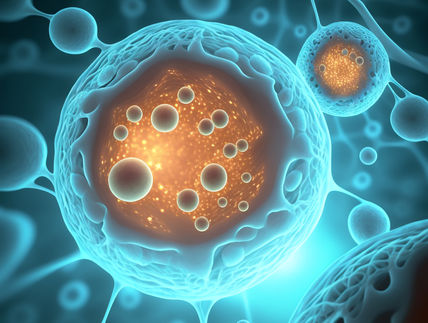Quality assurance in cells power plants
mitochondria generate most of the energy cells need through a respiratory chain for which they must produce their own proteins. The research group of Associate Professor Henna Tyynismaa, University of Helsinki, Finland, has discovered a "quality control" mechanism in the mitochondria, which is necessary for the construction of a functional respiratory chain.
Tyynismaa's group studied a mitochondrial enzyme, which attaches the correct amino acid to the transfer RNA, which directs protein synthesis. Working together with the Chinese Academy of Sciences and University of Turku researchers, the group established that this enzyme makes mistakes and can attach the wrong amino acids to the transfer RNA. This means that the amino acid sequence in the resulting respiratory chain proteins would be incorrect, unless the enzyme had an additional mechanism to correct its mistakes.
"We found that the error-correction mechanism of this mitochondrial enzyme is vital for the cell: even a slight decrease in the correction mechanism had an adverse effect on the function of the cell. The significance of this mechanism for the mitochondria was previously unknown," explains Tyynismaa.
Deviations in the mitochondrial protein synthesis can result in many different hereditary diseases. The enzyme, which is the focus of this research, is also known to harbour disorders caused by genetic anomalies, which may result either in a severe neonatal heart disease or a brain disease with an onset in early adulthood.
"We do not currently know whether these diseases are the result of the weakened ability of the enzyme to attach the correct amino acids to the transfer RNA or problems in its error-correction mechanism. A better understanding of the enzyme's fundamental mechanisms may help us determine the impact of the faulty genes in the future," says Tyynismaa.
Original publication
Most read news
Original publication
Taru Hilander, Xiao-Long Zhou, Svetlana Konovalova, Fu-Ping Zhang, Liliya Euro, Dmitri Chilov, Matti Poutanen, Joseph Chihade, En-Duo Wang, Henna Tyynismaa; "Editing activity for eliminating mischarged tRNAs is essential in mammalian mitochondria"; Nucleic Acid Research; 2017
Topics
Organizations
Other news from the department science

Get the analytics and lab tech industry in your inbox
By submitting this form you agree that LUMITOS AG will send you the newsletter(s) selected above by email. Your data will not be passed on to third parties. Your data will be stored and processed in accordance with our data protection regulations. LUMITOS may contact you by email for the purpose of advertising or market and opinion surveys. You can revoke your consent at any time without giving reasons to LUMITOS AG, Ernst-Augustin-Str. 2, 12489 Berlin, Germany or by e-mail at revoke@lumitos.com with effect for the future. In addition, each email contains a link to unsubscribe from the corresponding newsletter.




















































